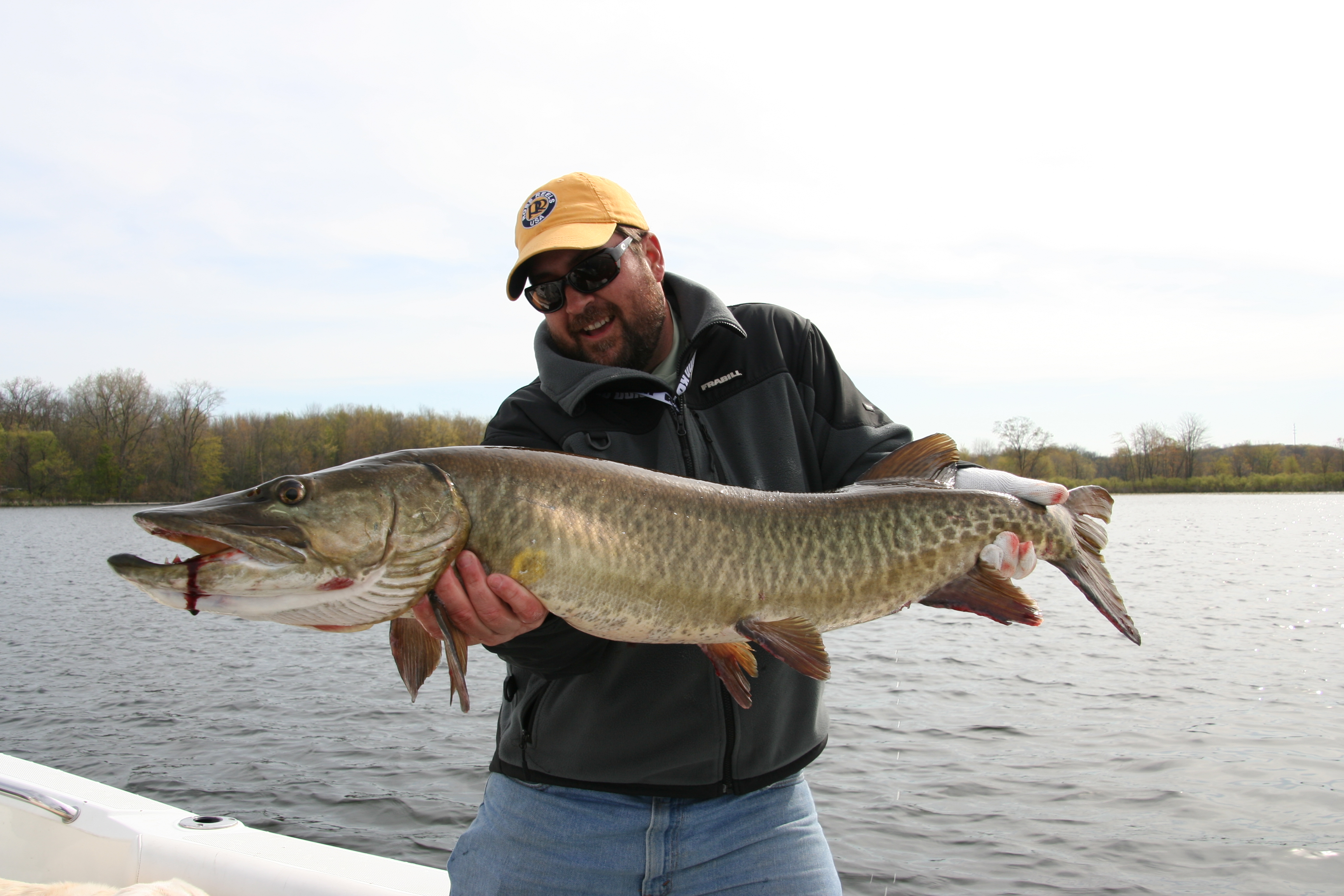Indiana is a sleeper state for musky fishing. As surprising as it may sound, Indiana is home to one of the premier musky fisheries in the country.
Lake Webster, the Barbee Chain and the Tippecanoe Chain are the most popular musky fishing lakes of northern Indiana, but a few lesser-known waters remain favorite destinations of those in the know.
The Hoosier State's most productive musky waters are in the northeast region where a number of other lakes and rivers produce trophy musky. None of these lakes are large by any means, but all boast astonishing musky densities.
Muskies are a native fish species in Indiana, but ironically only to the extreme southern tributaries of the Ohio River. Yet, for over three decades now, muskies have been growing in number and popularity in northern Indiana's natural lakes.
There are currently six waters being stocked with musky in northern Indiana. They are Lake Webster, the Tippecanoe Chain (three lakes), the Barbee Chain (seven lakes), Skinner Lake, Everett Lake and Bruce Lake. Several other lakes have been stocked over the years and still hold good populations of fish. The most notable is Loon Lake, which was one of the first Indiana lakes to be stocked with musky.
The history of the northern Indiana musky fishery is rooted in a success story of collaboration between anglers and the DNR. The DNR and Hoosier Musky Club both need to be commended. This example of the public and government working together to establish a fishery remains a shining example of how to accomplish such a task.
The DNR began the musky stocking program after the anglers presented the DNR with their desire for establishing musky in a number of northern Indiana lakes. The initial stocking of musky took place in 1978 when a select group of lakes were stocked with fingerlings.
Lake Webster was included in that stocking and received an initial 350 musky between 10 and 12 inches long. After 1981, aggressive stocking efforts ensued. The collaboration between the musky clubs and the DNR continued to work well as each contributed fish to the stocking program.
Since the late 1990s, the musky population of Lake Webster has served as Indiana's brood stock for musky eggs. All muskies now stocked in the state originate from adults captured there. The state no longer imports any muskies from outside states, so Indiana's musky program is completely self-sustaining.
To collect eggs and milt, the DNR captures the Lake Webster adult muskies in large fish traps. DNR biologists collect eggs, which are then fertilized with milt. They hatch at the East Fork State Fish Hatchery in southwest Indiana. The fingerlings are stocked in Indiana lakes and reservoirs.
At the time they are stocked into the fisheries, musky average eight to 10 inches in length. It is estimated they'll reach 30 inches by the time they're four years old, and most should be close to the magic mark of 36 inches, making them a legal fish, by the time they reach five years of age.
During their last 30 days at the hatchery the musky are fed minnows to help hone their predatory instincts.
Very few muskies are kept by fishermen. This is what we anglers want to hear and work to promote. However, it is not illegal to keep a musky. If your heart is set on putting a musky on the wall, and a reproduction just won't satisfy your desire, then know that Indiana has a daily limit of one musky that must measure at least 36 inches.
Although this column focuses on fishing the natural lakes of northern Indiana, it's worth noting that there are four musky fisheries in the southern half of the state. Eagle Creek Reservoir, Brookville, Lake Waveland and four connected strip pits in the Dugger Unit of the Greene-Sullivan State Forest are stocked with musky each year. The pits are Bass, West, Black Cat and Duck Lakes.
Catching a musky is more challenging than most freshwater fishing opportunities. It's a lot like hunting. You must put in time and have patience. When the stars align and you end up cradling a musky in your arms, you truly are holding a trophy of a lifetime.
See you down the trail…
For more Driftwood Outdoors, check out the podcast on driftwoodoutdoors.com or anywhere podcasts are streamed.



